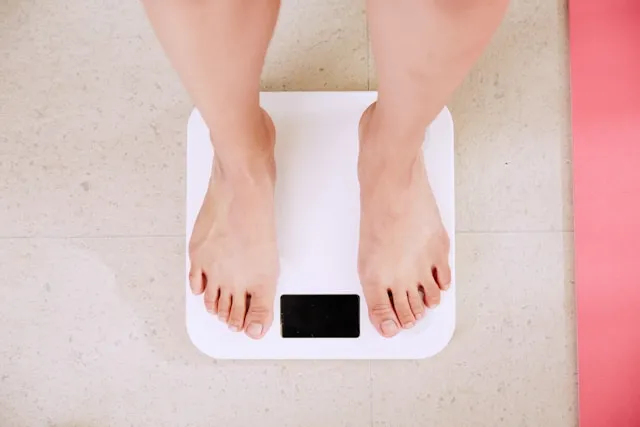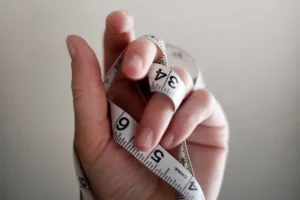When it comes to health and fitness, numbers matter — but they don’t tell the whole story. For men who are 5 feet 6 inches tall, understanding the average weight for 5’6 male isn’t just about hitting a number on the scale. It’s about finding a healthy range that works with your body frame, lifestyle, and goals.
The truth? There isn’t one “magic” number. There’s a range — a healthy, flexible range — that accounts for small, medium, and large body frames, activity levels, and even differences in muscle mass. For a male 5’6 in height, that healthy range is typically 136 to 164 pounds, but let’s dig deeper. You’ll soon see that the scale is only part of the story, and understanding what is the average weight for a 5’6 male requires a closer look at your unique build and lifestyle.
Key Takeaways
- The average weight for a 5’6 male typically falls between 136 and 164 pounds, depending on body frame.
- Calorie needs range from 1,768 to 2,788+ per day, depending on activity.
- Muscle mass, age, and lifestyle can push your ideal weight above or below the “average.”
- BMI is a guide, not a rule — especially for active, muscular individuals.
- Focus on long-term, sustainable habits, not crash diets.
Healthy Weight Ranges for a 5’6 Male
Most experts agree that healthy weight is about balance — too low, and you risk nutrient deficiencies and low energy. Too high, and you may increase your risk for certain chronic conditions. Based on widely used height-to-weight charts and BMI data:
- Small body frame: 136–142 lbs
- Medium body frame: 139–151 lbs
- Large body frame: 146–164 lbs
Here’s where it gets interesting: The average weight for a male 5’6 with a small frame can be just 136 pounds, while a muscular athlete of the same height could weigh 170+ and still be perfectly healthy. That’s why “average” doesn’t mean “one-size-fits-all.”
Why Body Frame Matters
Ever wonder why two men of the same height can look completely different at the same weight? Body frame size — the natural width and density of your bones — makes a huge difference.
- Small frame: Narrow shoulders, thinner wrists, and lighter bone mass
- Medium frame: Balanced proportions, average bone density
- Large frame: Broad shoulders, thicker wrists, denser bones
If you’re aiming for the average weight for a 5’6″ male, you’ll need to first figure out your frame size. A simple method? Wrap your thumb and middle finger around your wrist. If they overlap easily, you’re small-framed. If they just touch, medium. And if they don’t meet, large.
Calorie Needs by Weight and Activity
Knowing the average weight for 5’6 male is one thing — but maintaining it? That’s where calorie needs come in. Here’s a breakdown for each frame and activity level:
Small Frame (136–142 lbs)
- Inactive: ~1,768 calories/day
- Active: ~2,414 calories/day
Medium Frame (139–151 lbs)
- Inactive: ~1,807 calories/day
- Active: ~2,567 calories/day
Large Frame (146–164 lbs)
- Inactive: ~1,898 calories/day
- Active: ~2,788 calories/day
These are baseline numbers. If you’re extremely active — say you work a physically demanding job or hit the gym hard — your needs could be higher.
The Role of Muscle Mass
Here’s the twist: the average weight for a 5’6″ male can be misleading if we ignore muscle mass. Muscle is denser than fat, which means a fit, muscular man may weigh more but have a lower body fat percentage.
That’s why two men can weigh 160 pounds and look dramatically different — one might have a lean, athletic build, while the other may have higher fat stores. If you strength train, don’t panic if you’re above the “chart weight.” Focus on body composition instead.
BMI and Its Limits
BMI (Body Mass Index) is often used to define “healthy weight” for height. For a 5’6 male:
- Normal BMI range: 18.5 to 24.9
- Weight range this equals: ~115 to 154 pounds
But here’s the catch — BMI doesn’t account for muscle mass. That means a healthy, muscular man at 165 pounds could technically be “overweight” by BMI, even if his body fat is low.
Setting a Realistic Goal Weight
If you’re starting a weight loss or fitness journey, aim for the higher end of your healthy range first — say 160–164 lbs for a large frame. Why? It’s easier to maintain, avoids extreme restrictions, and allows for muscle gain without constant calorie stress. Once you feel comfortable, you can adjust downward if needed.
Lifestyle Factors That Affect Your Ideal Weight
While the charts give us a range, real life is more nuanced. Your ideal weight depends on:
- Activity level (desk job vs. physical labor)
- Age (metabolism slows over time)
- Health conditions (thyroid disorders, injuries, etc.)
- Fitness goals (bulking, cutting, endurance training)
For example, a 25-year-old competitive boxer may weigh 150 lbs with 8% body fat, while a 45-year-old office worker might feel healthiest at 158 lbs with 15% body fat.
Nutrition Tips for Maintaining a Healthy Weight
If your goal is to hit the average weight for male 5’6 and keep it, your nutrition matters as much as your workouts. Here are practical tips:
- Prioritize protein to support muscle retention
- Balance carbs and fats for sustained energy
- Avoid extreme diets — they’re rarely sustainable
- Hydrate — dehydration can mask itself as hunger
- Monitor portion sizes without obsessing over every calorie
Why Flexibility Matters
Strict weight targets can backfire. If your healthy range is 136–164 lbs, don’t panic if you fluctuate by a few pounds. Weight naturally changes with hydration, food intake, and training cycles. The key is consistency over weeks and months, not day-to-day perfection.
Final Thoughts
Your healthiest weight isn’t just about a chart — it’s about how you feel, perform, and sustain your lifestyle. The average weight for 5’6 male gives you a starting point, but your real goal should be building a body that supports your life — whether that’s running marathons, playing with your kids, or simply feeling good in your own skin.
FAQs on Average Weight for a 5’6 Male
The average healthy weight range for a 5’6 male is about 136–164 pounds, depending on body frame size. Muscle mass and body composition can shift this range.
You can measure your wrist circumference to estimate your frame. Smaller wrists indicate a small frame, while thicker wrists suggest a larger frame.
Yes, 150 pounds falls within the healthy range for most 5’6 males, particularly for medium or large frames. The ideal weight also depends on muscle mass and overall health.
Yes, if the extra weight is from muscle rather than fat. Athletes and those with high muscle mass can be heavier while maintaining excellent health.
Calorie needs vary by activity level. For most 5’6 males, maintenance ranges from about 1,768 to 2,788 calories per day.
Yes, metabolism typically slows with age, which can make weight management more challenging. Maintaining muscle through strength training can help.
BMI can be a helpful guideline but doesn’t account for muscle mass. Active, muscular individuals may have a higher BMI while still being healthy.








